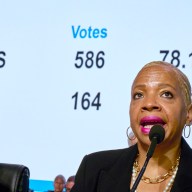As a rolling technological showcase and glimpse at a possible future in gasless mobility, Mini has created a wholly electric-powered model called the Mini E. It’s fun to look at and runs only on electrons.
Electric cars like this aren’t popping up all over Canadian roadways just yet, but the fully-functioning Mini E is a look at a technology that us Canucks will soon start seeing plenty more of.
I recently spent a morning with a Mini E prototype that had retired from a fleet of early test models deployed to gather real-world data south of the border. As a die-hard lover of fossil fuels, the Mini E changed my perceptions on electric transportation in more ways than one.
Here’s a look at some of the important notes from the test drive — and some of the reasons you should care about this little electric thing.
• Things fire up and slip into gear just like a regular automatic Mini Cooper. Relays click away as the instruments come to life, though no starter motor sounds are apparent. Once started, the Mini E is basically quiet — albeit for a slight hum from a battery-pack cooling fan.
• Electric motors make all of their torque, all of the time. The tester had 162 lb.-ft of the stuff available at every r.p.m., backed by 201 horsepower. Every press of the throttle, from any speed, is thereby met with a meaty forward surge of acceleration. The Mini E is in about the same butt-hauling ballpark as the Mini Cooper S, Volkswagen GTI or Volvo C30 T5.
• Lift the throttle and aggressive brake-energy regeneration makes using the brake pedal almost obsolete if drivers time their stopping properly.
• If the tested prototype went into production as-is, owners could drive about 160 kilometres on a 24-hour charge. A three-hour charge is possible, but requires the use of a higher voltage outlet. As is, the tester recharged via an adapter plugged into a standard household plug. If your daily travels were less than 160 kilometres, you’d never have to gas up again.
















